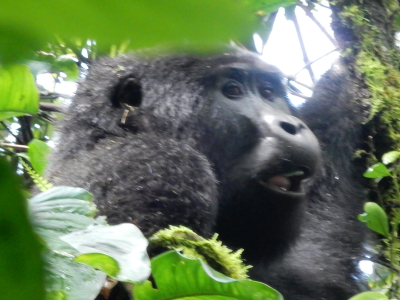HOW TO EXPERIENCE THE GREAT MIGRATION
The Great Migration hailed as one of the most spectacular displays on planet earth, the Great Wildebeest Migration across the Serengeti-Mara is everything you imagine it to be and more. Whether you have seen this spectacle on TV, in books, or the internet, it simply doesn’t compare to witnessing it firsthand.
What is it and who takes part?
The protagonists in this incredible natural phenomena are wildebeests, also known as gnus, and as many as 1.5 million of them take on this feat each year with over 200,000 zebras galloping alongside. They are also accompanied by thousands of antelope, impala, and gazelle.
The Great Migration is not only the largest on-land migration on earth, it’s also the longest. The migration these animals take on is a 480-kilometer (300-mile) loop in search of fresh green grass as they follow the seasonal rains.
It is as amazing as it sounds, and there are many other unique factors that make this migration so special. A wildebeest can grow up to 2.4 meters (8 feet) in length, and adults can weigh up to 600lbs (270kgs). During the months of the migration, over half a million calves are born and, at the season’s peak, nearly 8,000 calves are born every day! Not only that, but only minutes after birth, wildebeest calves can walk on their own and within a couple of days, can even outrun a lioness!
When to see great migration and where?
The Great Migration timeline: just like any wild animal, they work to no man’s schedule. However, this amazing annual event takes place in and around Tanzania and Kenya, an enormous area of Africa that is often referred to as the Great Rift Valley. The exact locations each year depend on the movement of the rain.
November to December sees the arrival of the short rains. This takes place in the southern Serengeti in the short-grass plains before urging the migration to travel east of the Seronera, around Ndutu, including the north section of the Ngorongoro Conservation area.
Through January, February, and March, millions of these animals migrate in an enormous loop and, as there is usually an abundance of water in the area, the peak birthing season begins. Come April and May, the enormous herds begin to disperse and start marching their way north.
Further into June/July time, the herd has thinned but there are still large concentrations that take to the west of the Serengeti and onto the southern banks of the Grumeti River. This is where the infamous Mara River crossing must take place. Usually, at the beginning of the high season in June, onlookers can watch the incredible scenes as wildebeest, zebra, and other animals in the herd make the dangerous Mara crossing through hungry crocodile-infested waters… need we say more?
How can I experience the great migration?
Everyone should witness the Great Wildebeest Migration at least once in their lives, there is nothing quite like it. To experience the Great Wildebeest Migration on one of the best Serengeti safari tours.
Take a look at the Great Migration safari packages shared below for some inspiration for your own Great Migration holiday in Kenya or Tanzania. Most trips include other fantastic tourist attractions and experiences.






You must be logged in to post a comment.